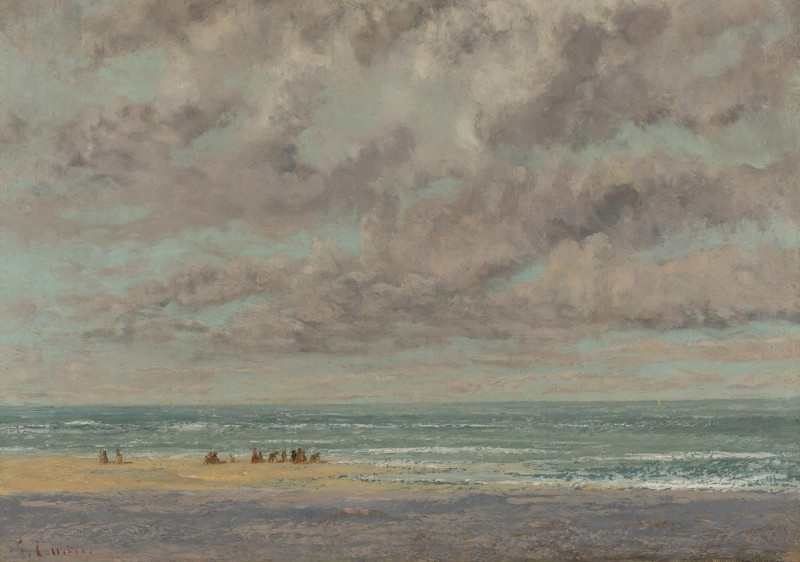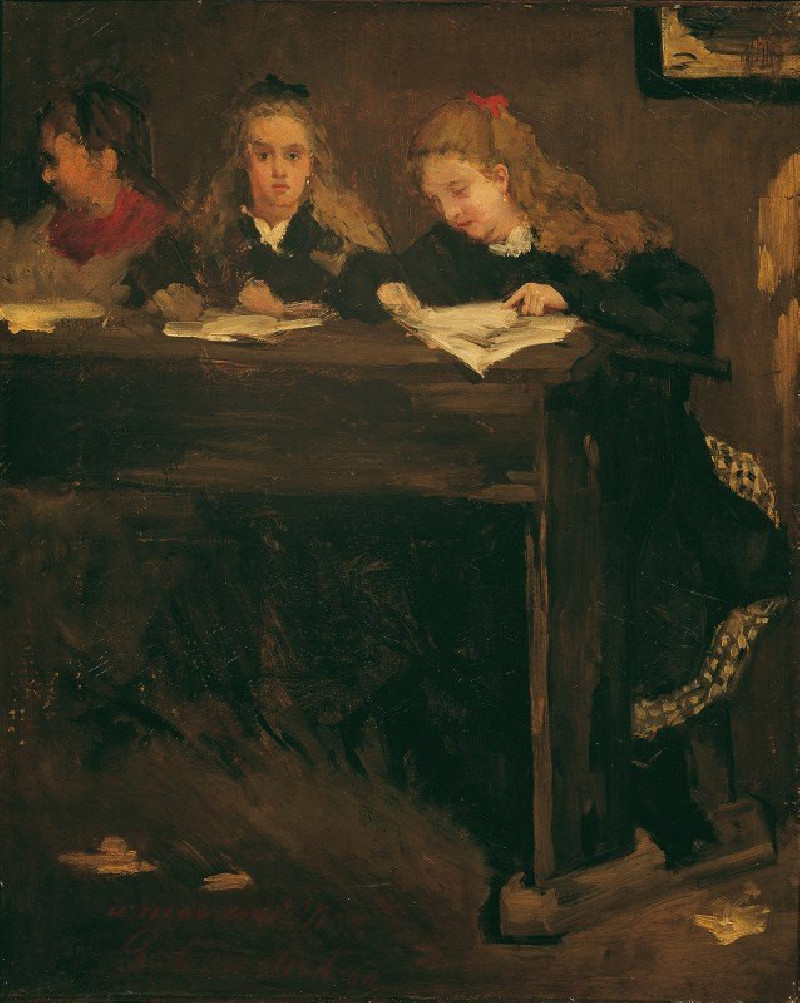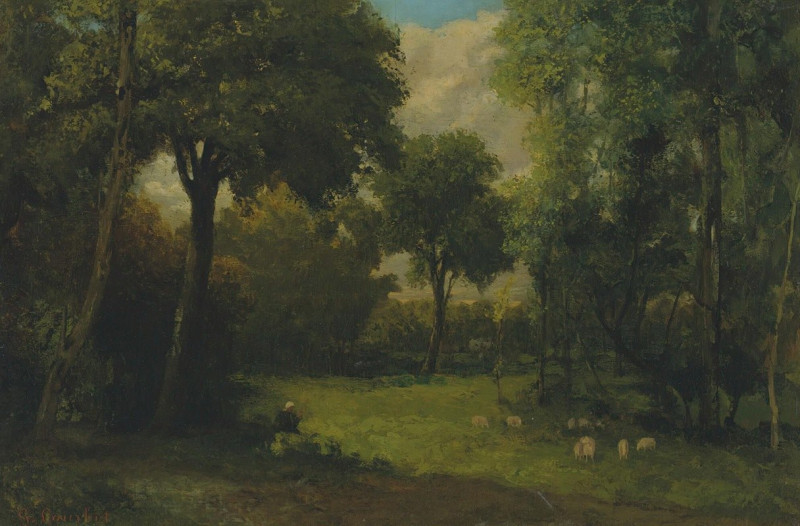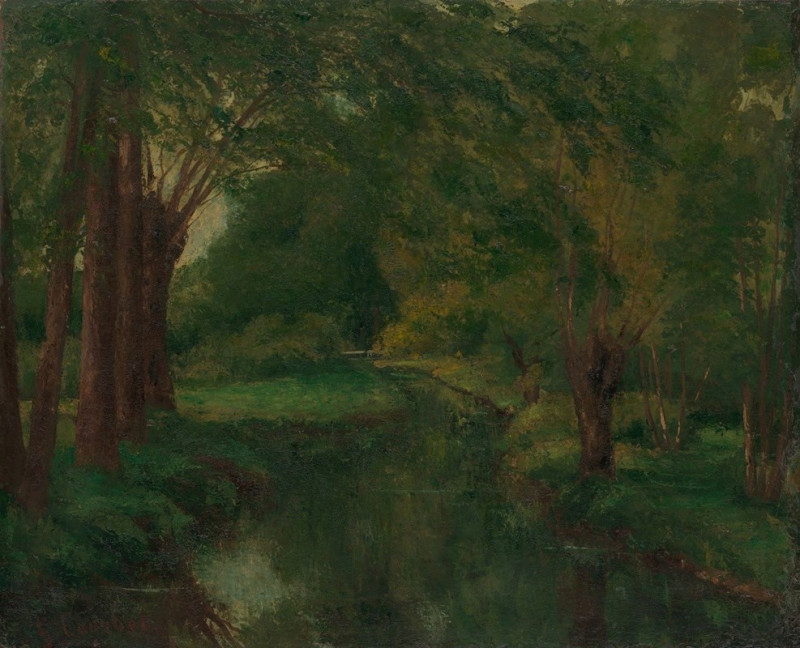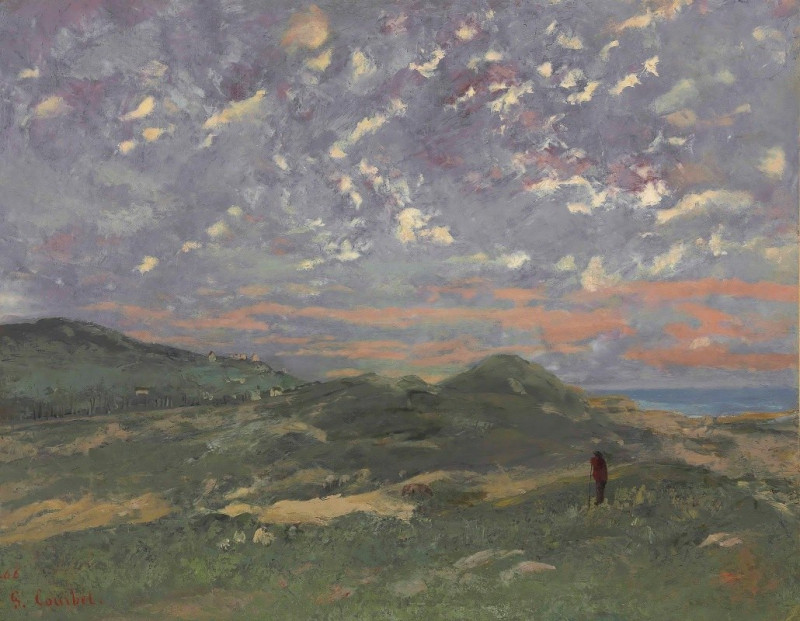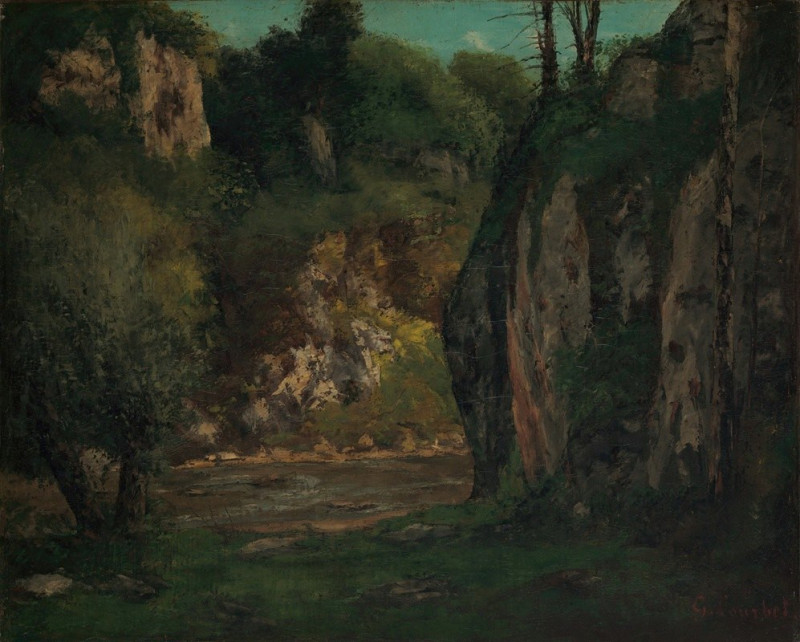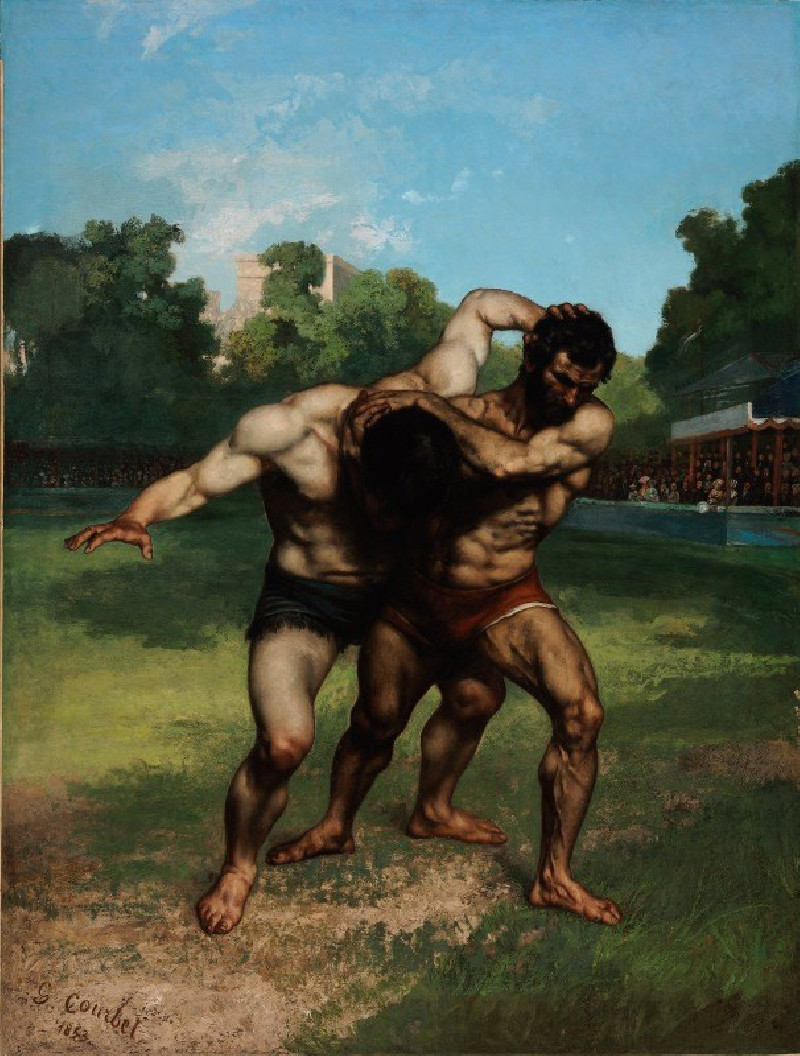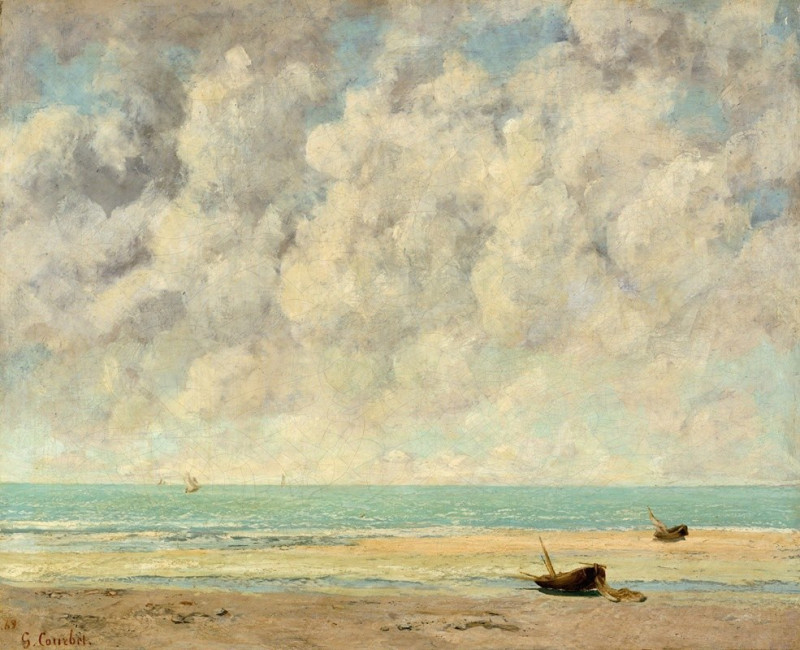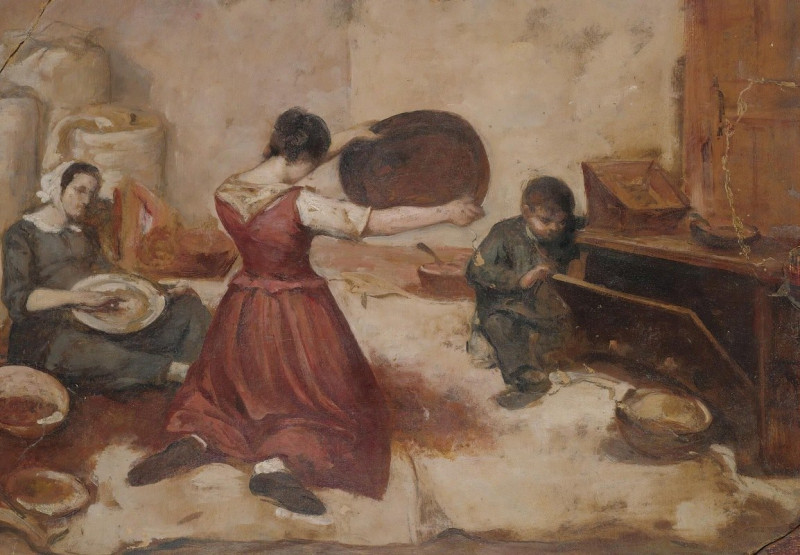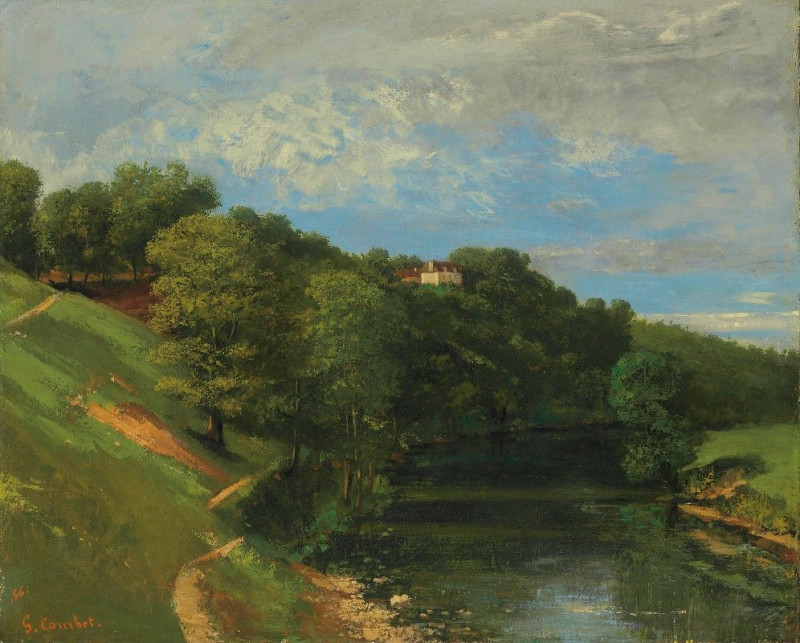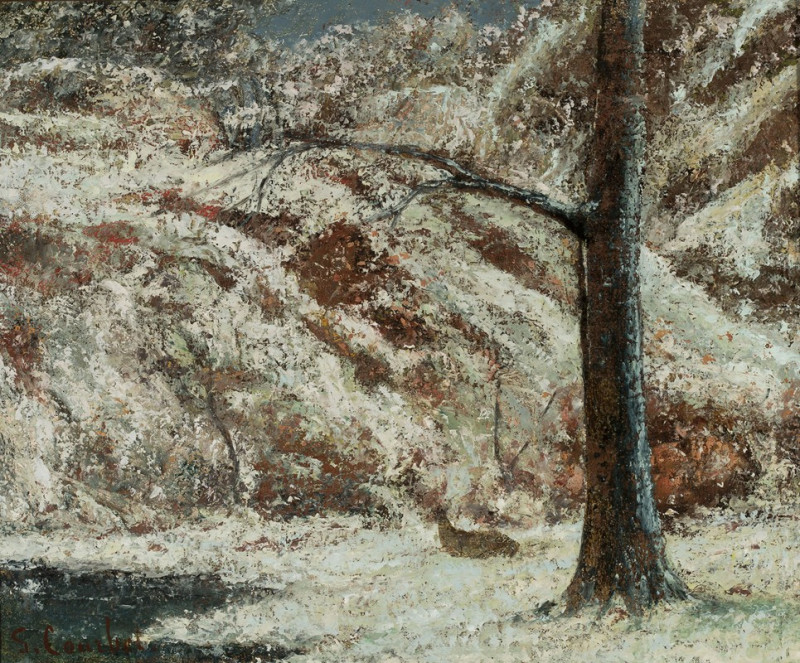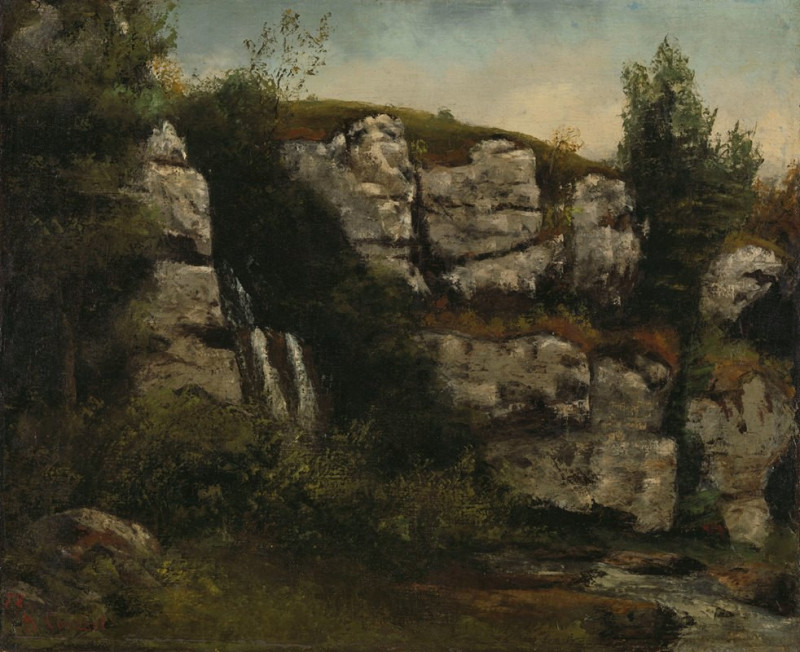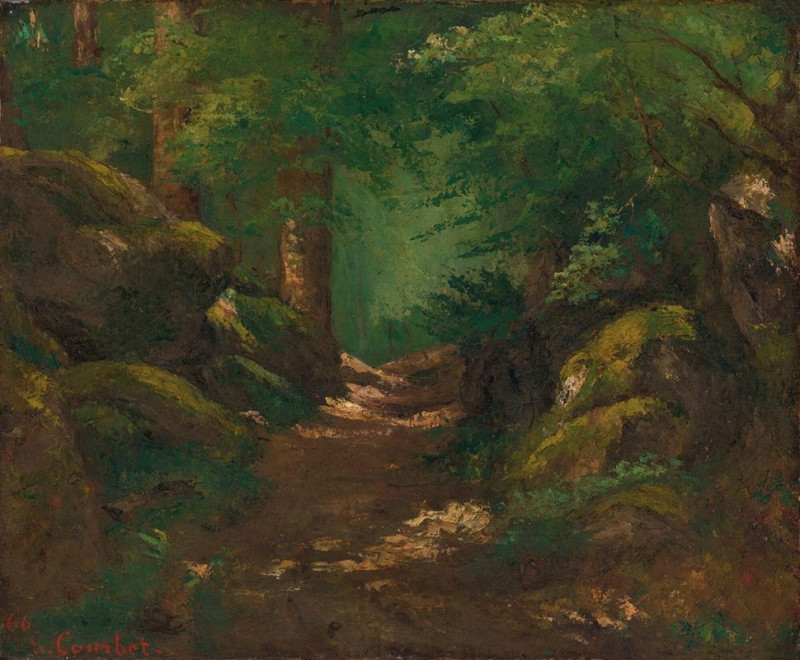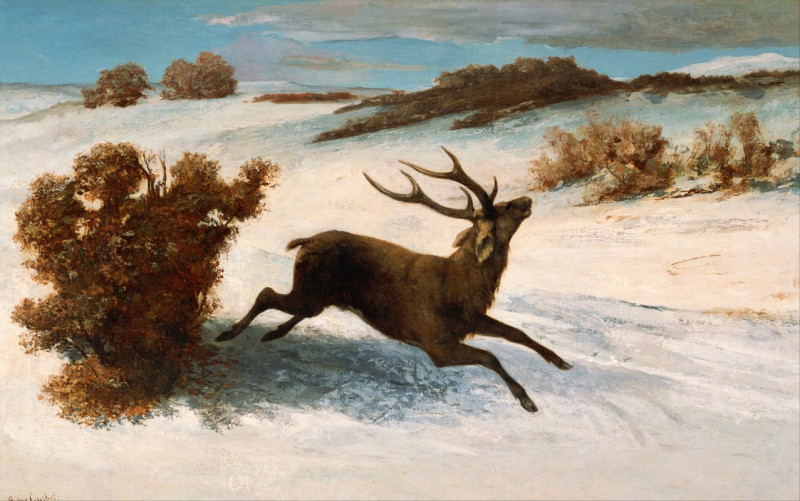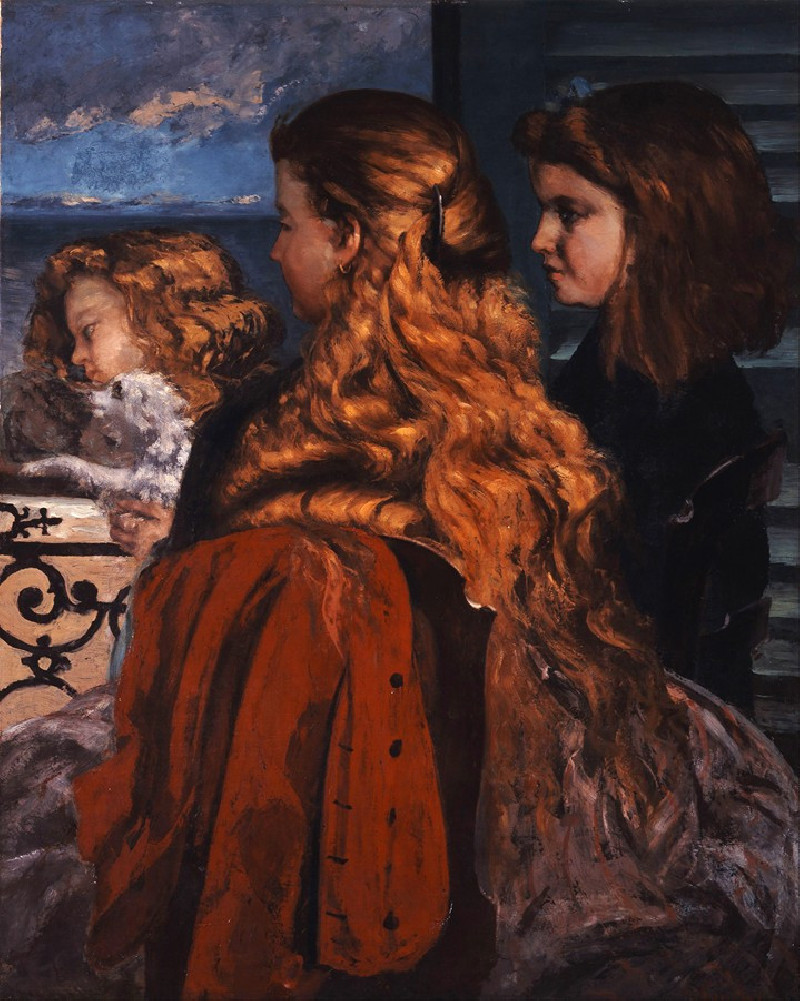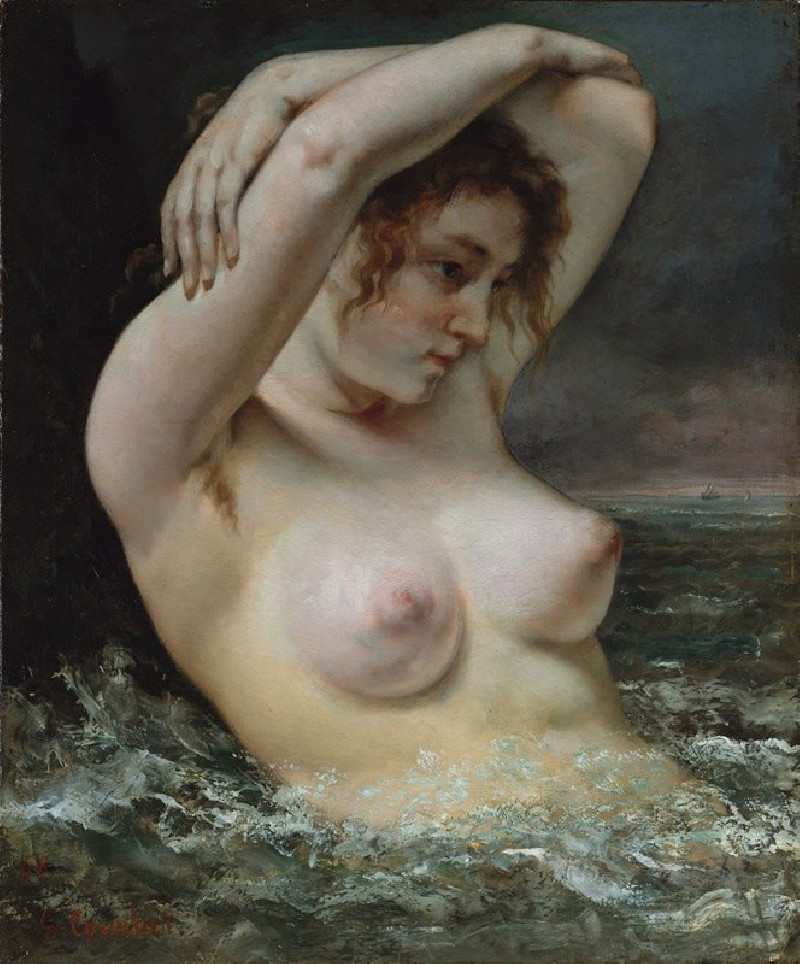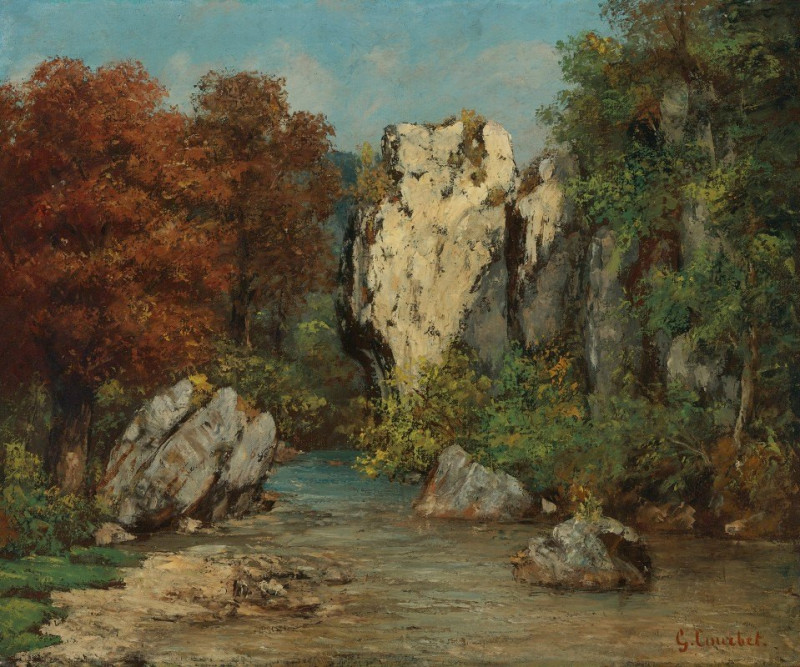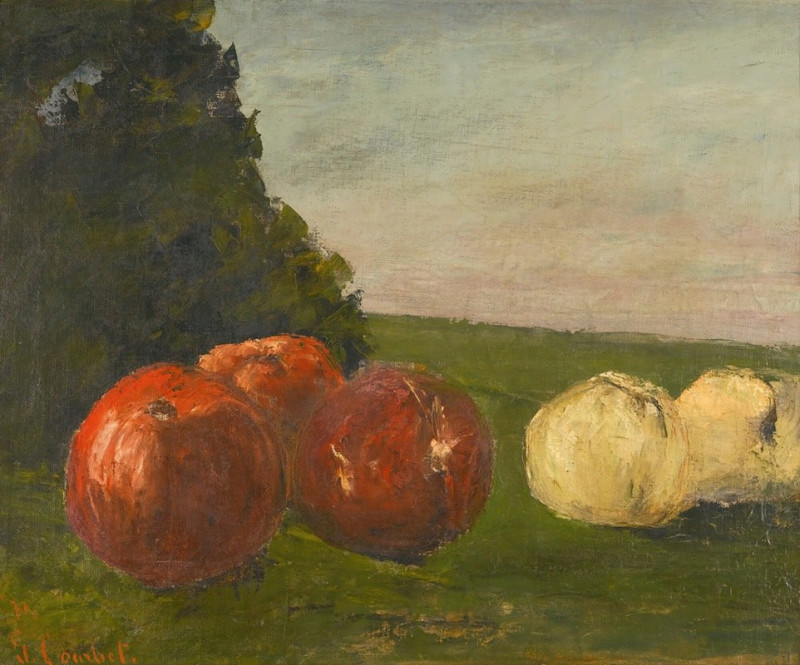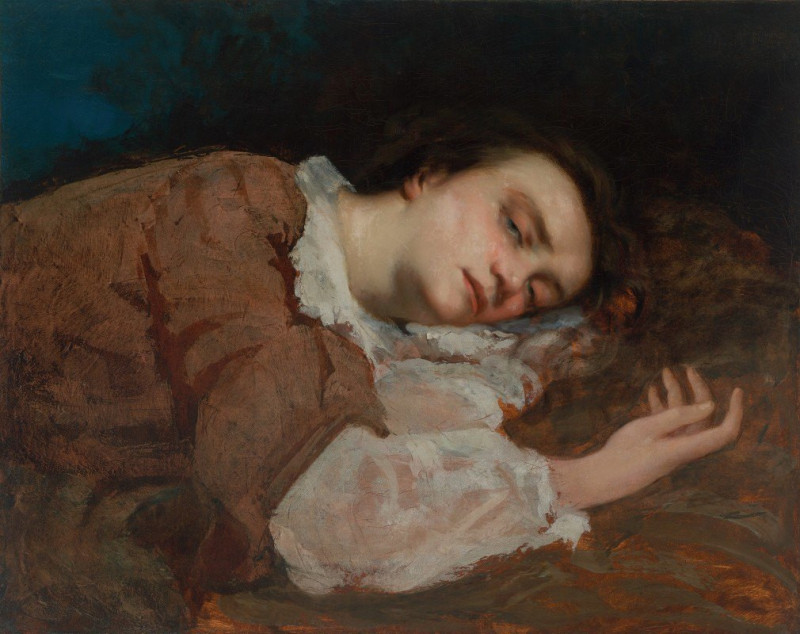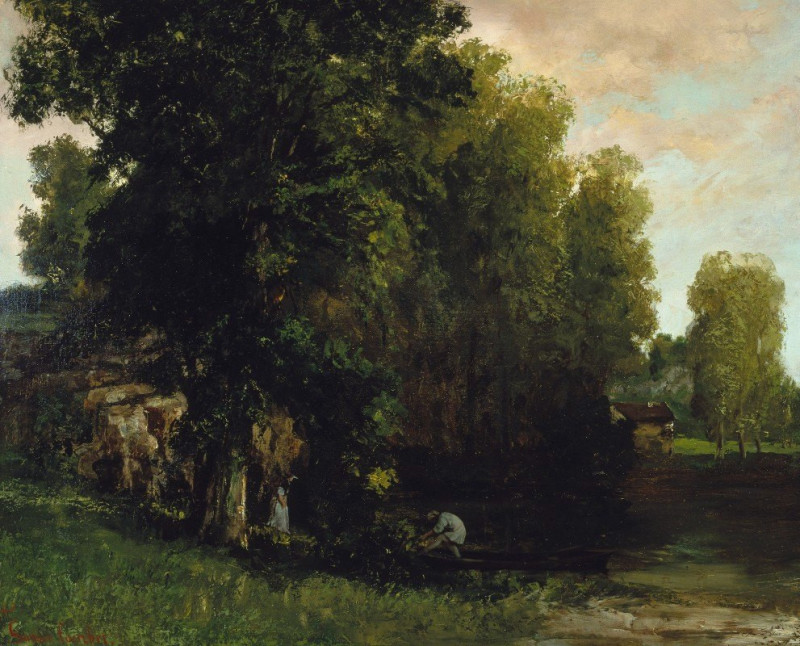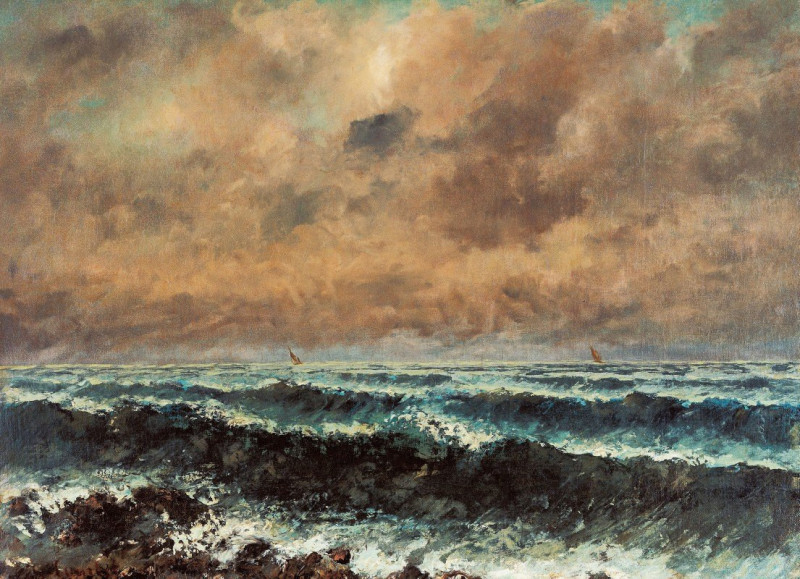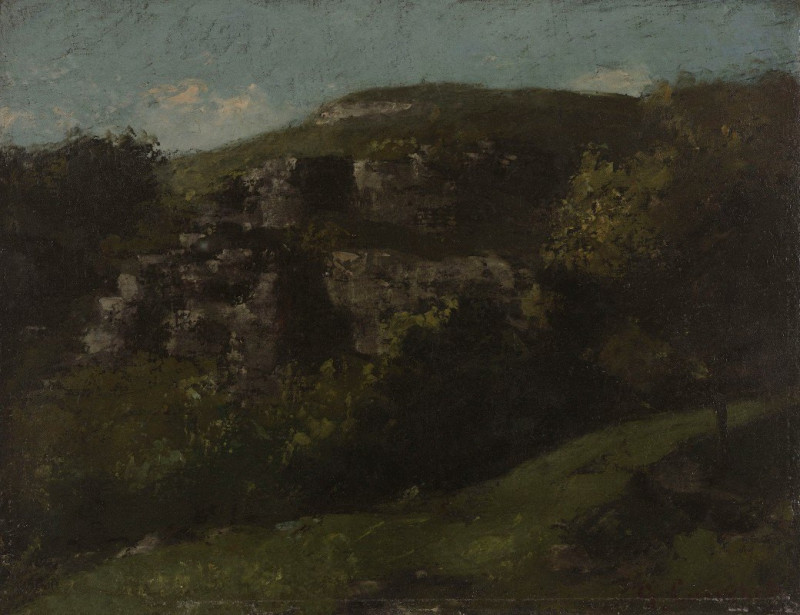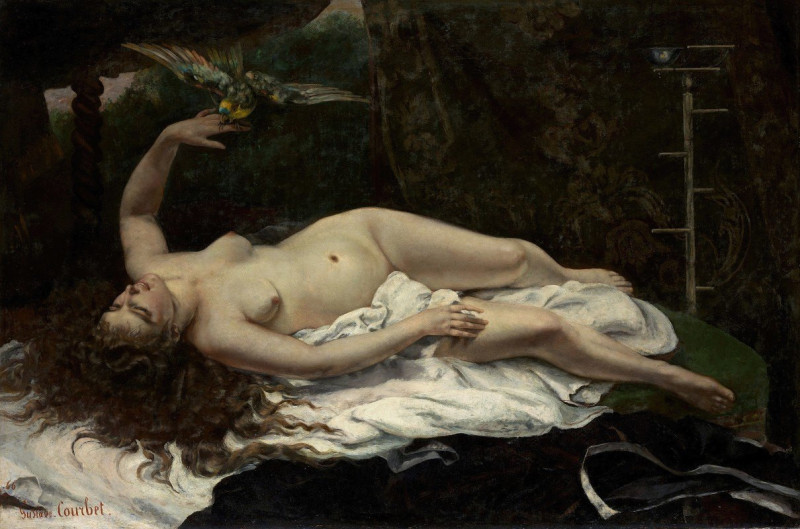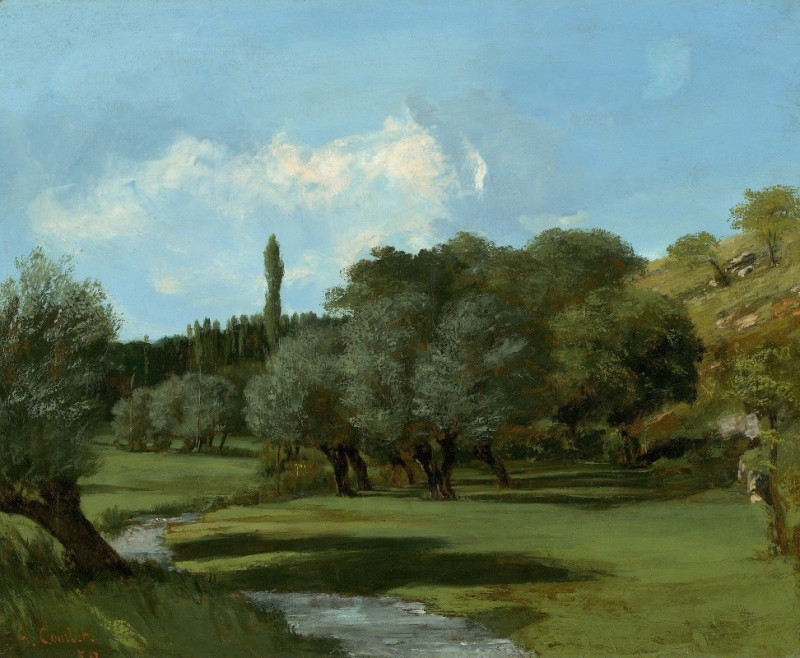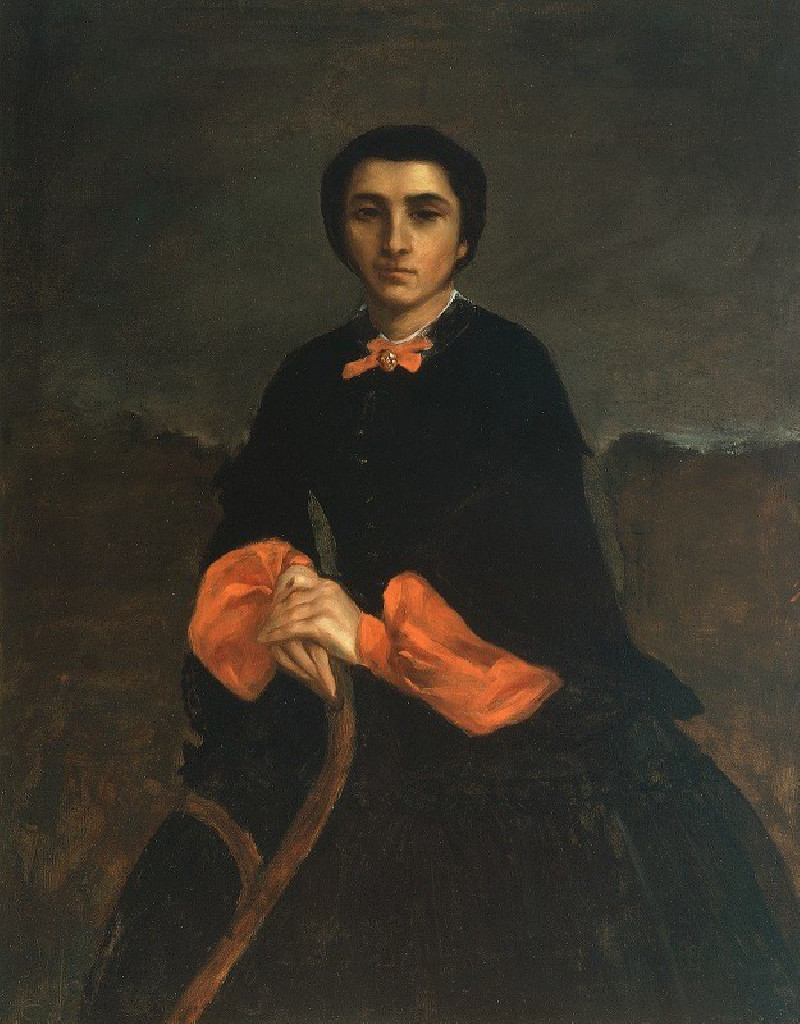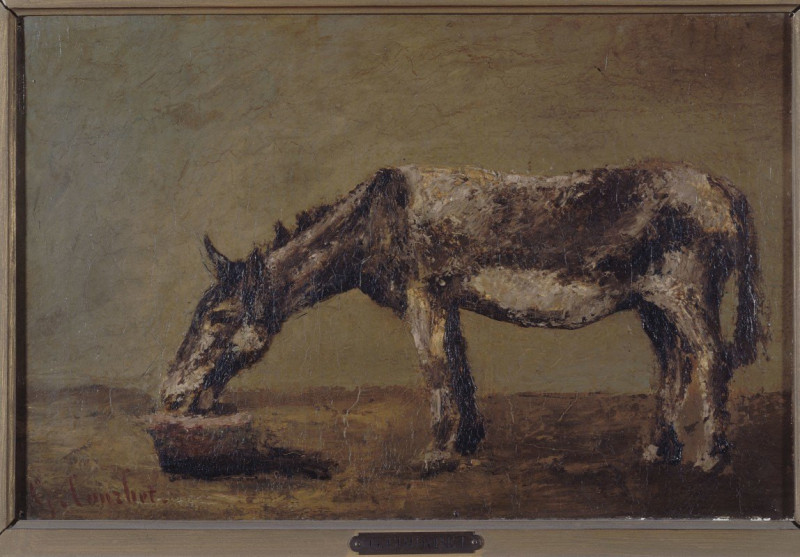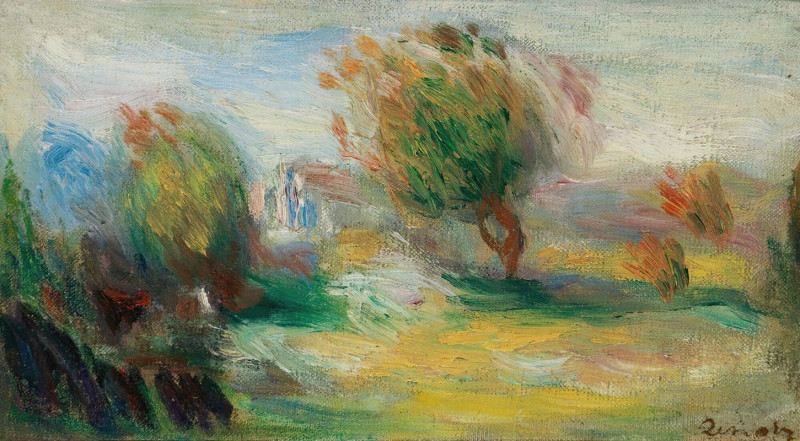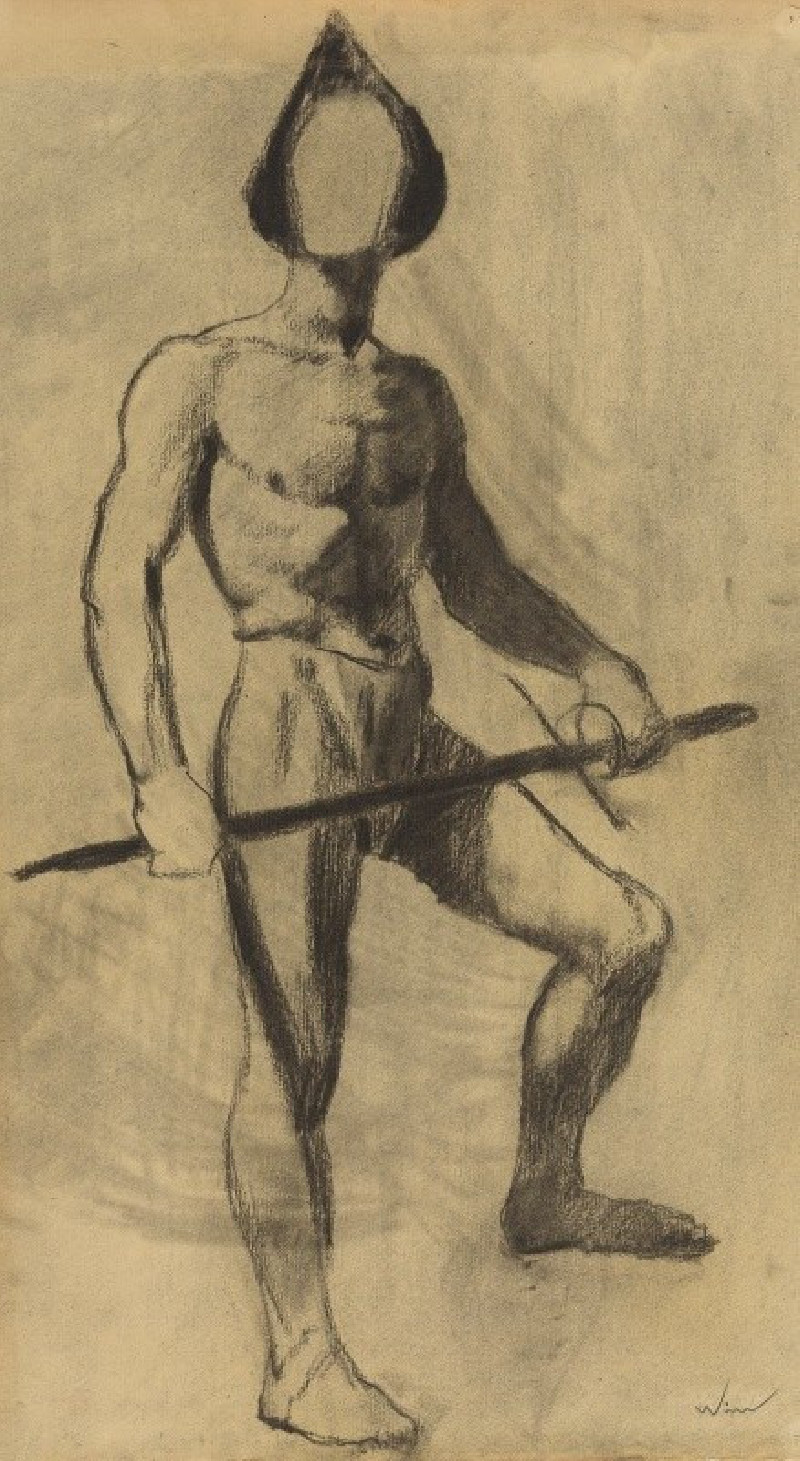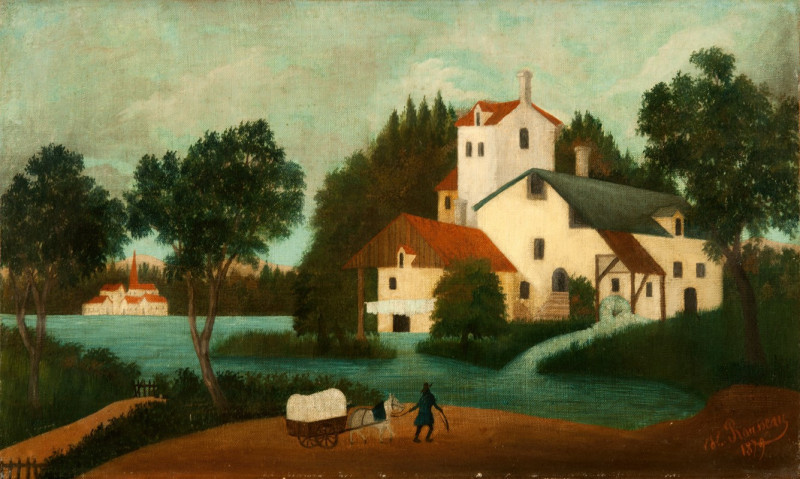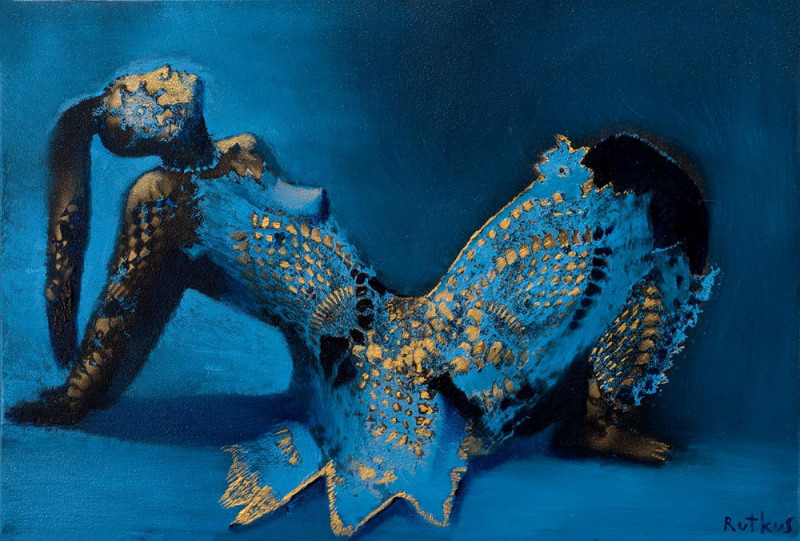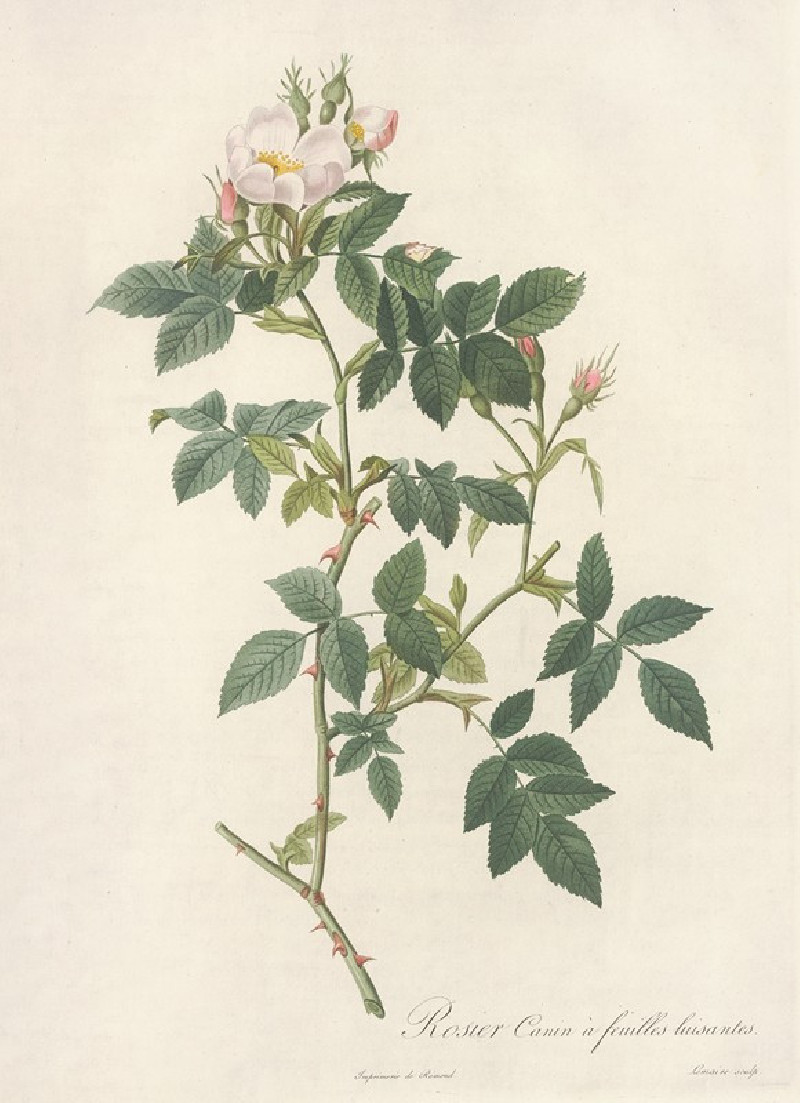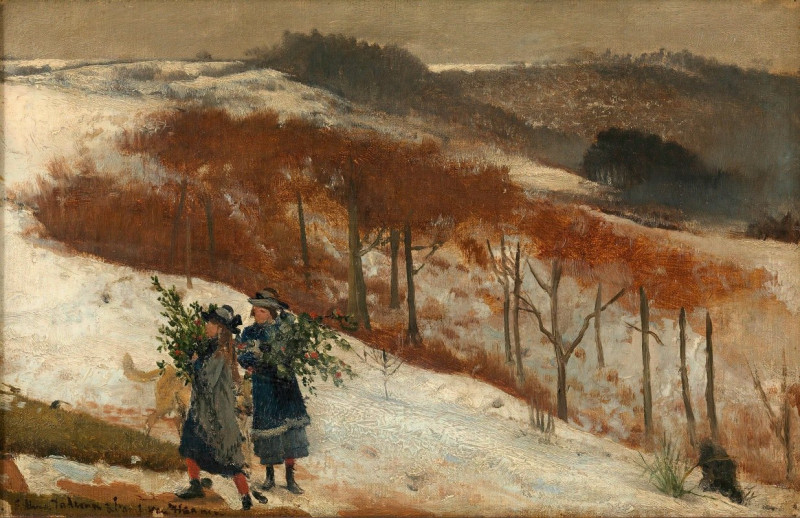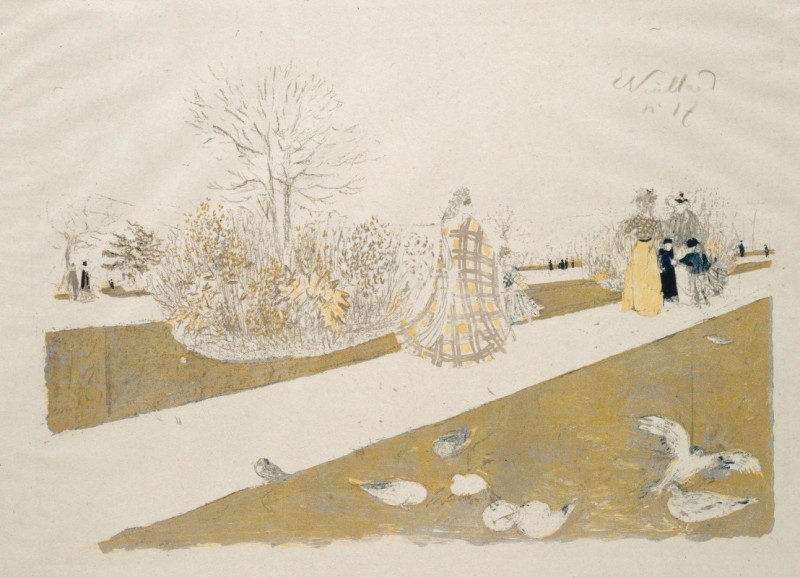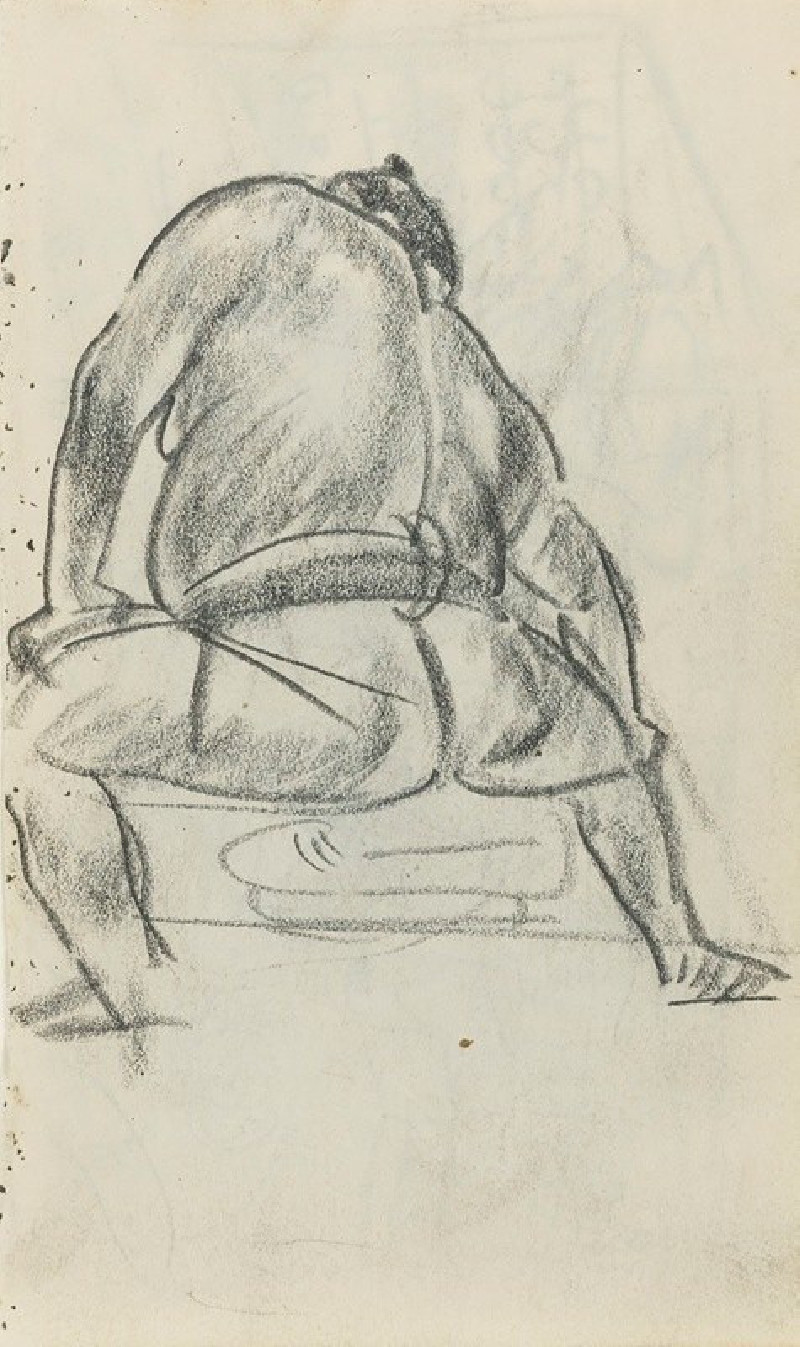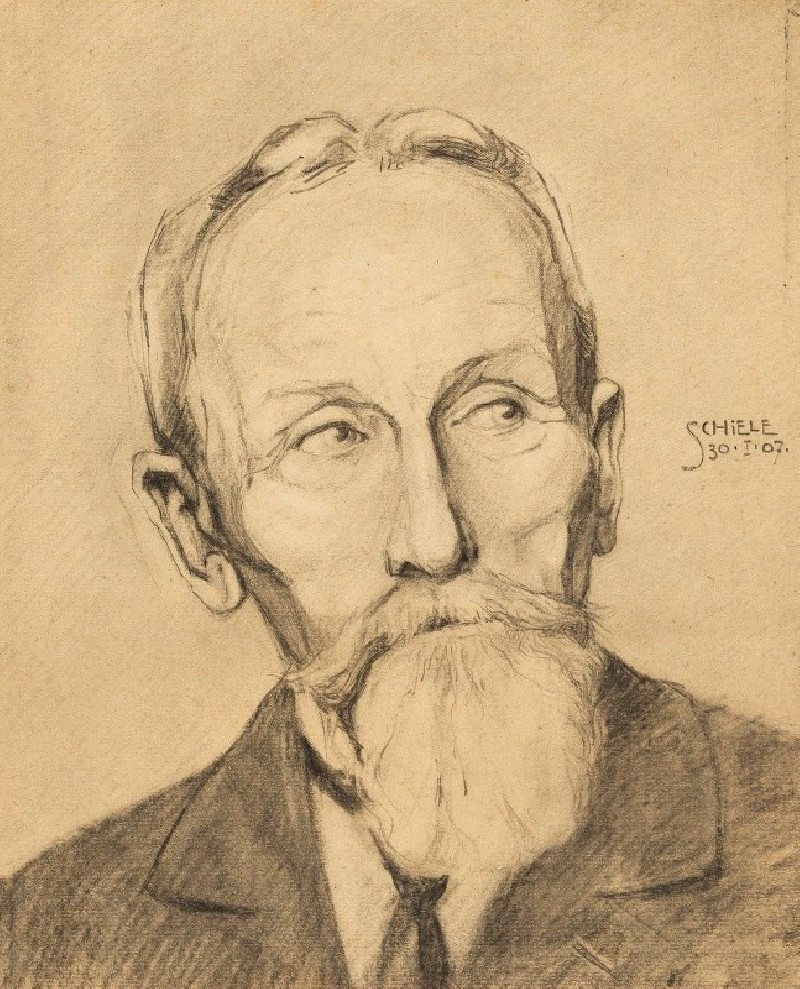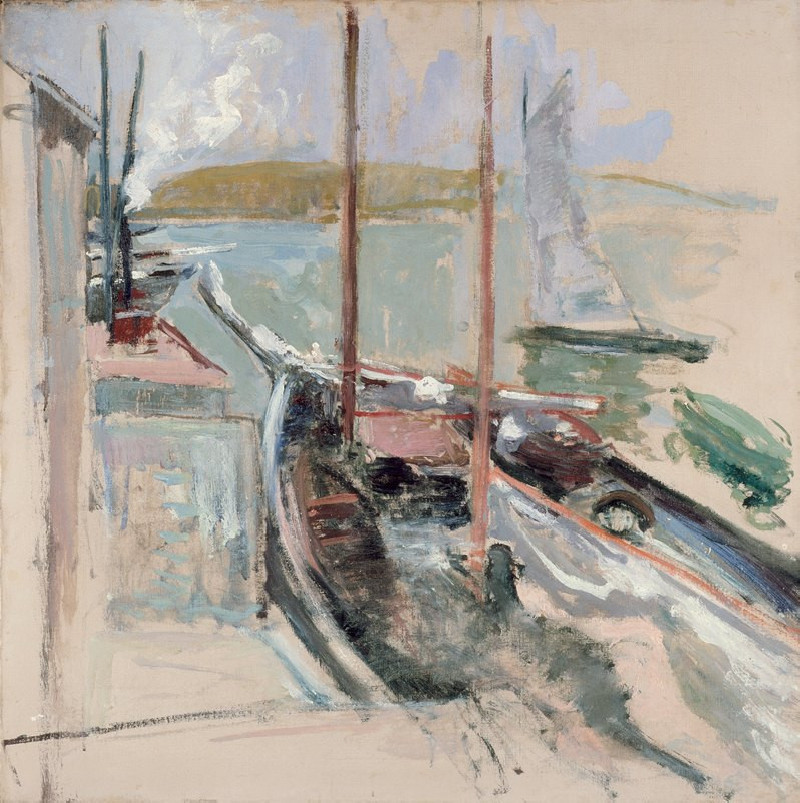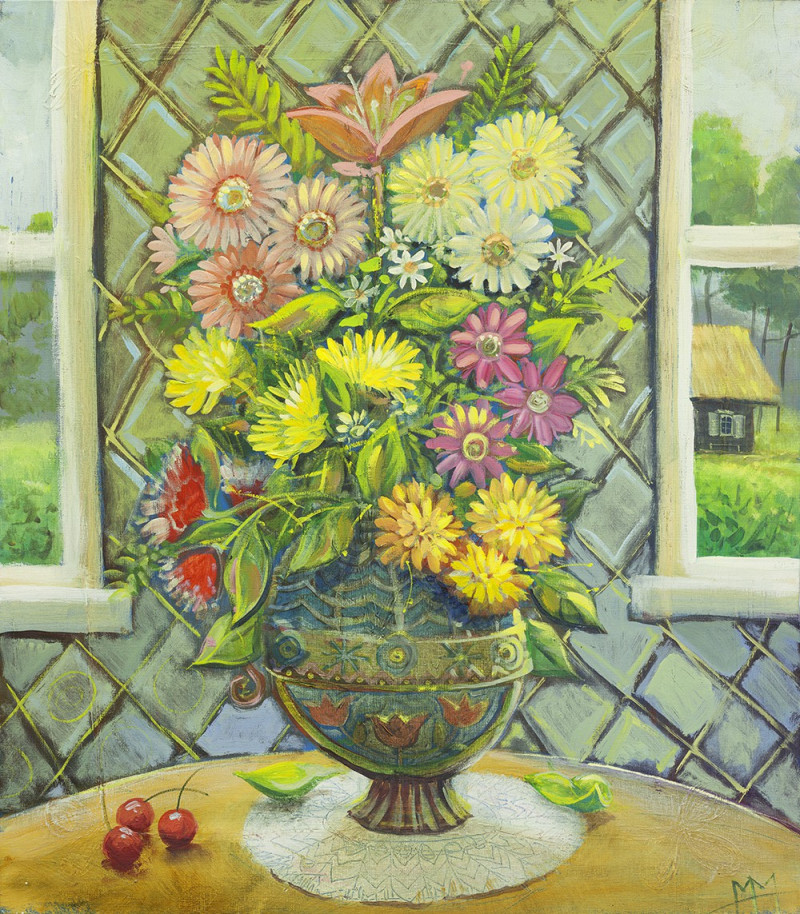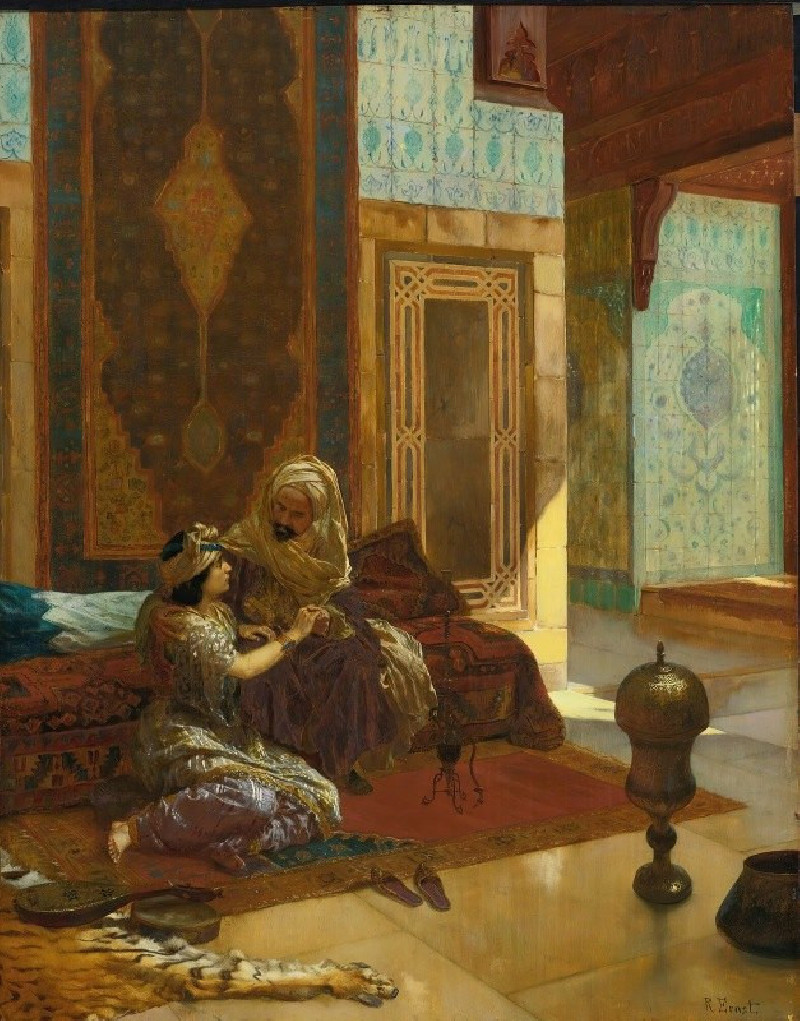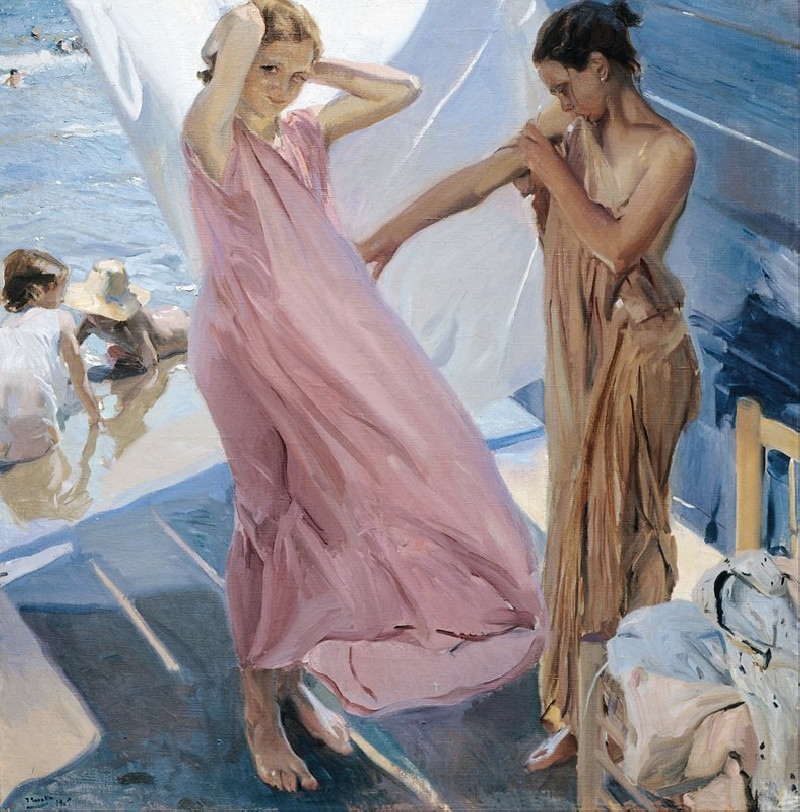Marine, Les Équilleurs
Technique: Giclée quality print
Recommended by our customers
More about this artwork
Gustave Courbet, renowned for his unflinching realism, captures the raw beauty of the marine landscape in his evocative painting "Marine, Les Équilleurs". The canvas is dominated by an expansive sky, its dramatic clouds rendered in moody shades of charcoal and pale blue, suggesting a transient light that bathes the scene below. Below this tempestuous sky, the eye meets the restless sea, whose waves crest with a frothy white.In stark contrast to the vastness of the sky and sea, the painting's foreground features figures on a beach engaged in the task of clam digging, known as "équillage." These individuals, depicted at a diminutive scale, emphasize the immense scale of nature enveloping them. The meticulous attention to detail in their activities, paired with the grandeur of the environment, encapsulates Courbet’s mastery in portraying both human endeavor and the sublime elements of nature.This artwork not only reflects Courbet's remarkable ability to convey texture and atmosphere but also serves as a poignant reminder of humanity’s modest place within the broader strokes of the natural world.
Delivery
Returns
Jean Désiré Gustave Courbet (10 June 1819 – 31 December 1877) was a French painter who led the Realism movement in 19th-century French painting. Committed to painting only what he could see, he rejected academic convention and the Romanticism of the previous generation of visual artists. His independence set an example that was important to later artists, such as the Impressionists and the Cubists. Courbet occupies an important place in 19th-century French painting as an innovator and as an artist willing to make bold social statements through his work.

